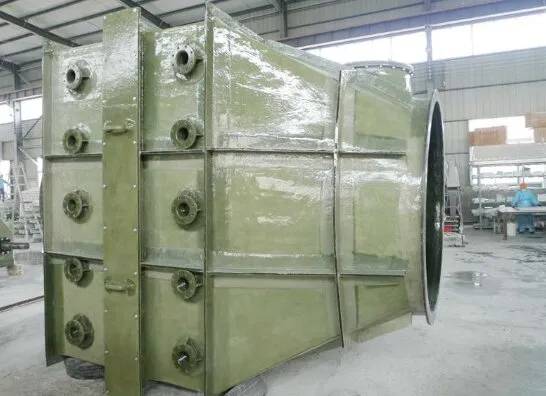
-
 Afrikaans
Afrikaans -
 Albanian
Albanian -
 Amharic
Amharic -
 Arabic
Arabic -
 Armenian
Armenian -
 Azerbaijani
Azerbaijani -
 Basque
Basque -
 Belarusian
Belarusian -
 Bengali
Bengali -
 Bosnian
Bosnian -
 Bulgarian
Bulgarian -
 Catalan
Catalan -
 Cebuano
Cebuano -
 China
China -
 China (Taiwan)
China (Taiwan) -
 Corsican
Corsican -
 Croatian
Croatian -
 Czech
Czech -
 Danish
Danish -
 Dutch
Dutch -
 English
English -
 Esperanto
Esperanto -
 Estonian
Estonian -
 Finnish
Finnish -
 French
French -
 Frisian
Frisian -
 Galician
Galician -
 Georgian
Georgian -
 German
German -
 Greek
Greek -
 Gujarati
Gujarati -
 Haitian Creole
Haitian Creole -
 hausa
hausa -
 hawaiian
hawaiian -
 Hebrew
Hebrew -
 Hindi
Hindi -
 Miao
Miao -
 Hungarian
Hungarian -
 Icelandic
Icelandic -
 igbo
igbo -
 Indonesian
Indonesian -
 irish
irish -
 Italian
Italian -
 Japanese
Japanese -
 Javanese
Javanese -
 Kannada
Kannada -
 kazakh
kazakh -
 Khmer
Khmer -
 Rwandese
Rwandese -
 Korean
Korean -
 Kurdish
Kurdish -
 Kyrgyz
Kyrgyz -
 Lao
Lao -
 Latin
Latin -
 Latvian
Latvian -
 Lithuanian
Lithuanian -
 Luxembourgish
Luxembourgish -
 Macedonian
Macedonian -
 Malgashi
Malgashi -
 Malay
Malay -
 Malayalam
Malayalam -
 Maltese
Maltese -
 Maori
Maori -
 Marathi
Marathi -
 Mongolian
Mongolian -
 Myanmar
Myanmar -
 Nepali
Nepali -
 Norwegian
Norwegian -
 Norwegian
Norwegian -
 Occitan
Occitan -
 Pashto
Pashto -
 Persian
Persian -
 Polish
Polish -
 Portuguese
Portuguese -
 Punjabi
Punjabi -
 Romanian
Romanian -
 Russian
Russian -
 Samoan
Samoan -
 Scottish Gaelic
Scottish Gaelic -
 Serbian
Serbian -
 Sesotho
Sesotho -
 Shona
Shona -
 Sindhi
Sindhi -
 Sinhala
Sinhala -
 Slovak
Slovak -
 Slovenian
Slovenian -
 Somali
Somali -
 Spanish
Spanish -
 Sundanese
Sundanese -
 Swahili
Swahili -
 Swedish
Swedish -
 Tagalog
Tagalog -
 Tajik
Tajik -
 Tamil
Tamil -
 Tatar
Tatar -
 Telugu
Telugu -
 Thai
Thai -
 Turkish
Turkish -
 Turkmen
Turkmen -
 Ukrainian
Ukrainian -
 Urdu
Urdu -
 Uighur
Uighur -
 Uzbek
Uzbek -
 Vietnamese
Vietnamese -
 Welsh
Welsh -
 Bantu
Bantu -
 Yiddish
Yiddish -
 Yoruba
Yoruba -
 Zulu
Zulu
Maintenance and Installation of FRP Piping System
FRP piping system has been widely used in various fields due to its excellent corrosion resistance, lightweight and high strength, insulation and other properties. Proper maintenance and installation are crucial to ensure its long-term stable operation. The following is the explanation for the maintenance and installation of FRP piping system.

Maintenance of FRP Piping System
Regular cleaning:
Regularly remove dirt and sediment from the surface of the pipeline to avoid adverse effects on pipeline performance.
Use mild cleaning agents and soft cloths for cleaning, and avoid using cleaning agents containing acidic or alkaline components to prevent damage to the pipeline.
Check the connection:
Regularly inspect the connection parts of the pipeline to ensure a tight and leak free connection.
If loose or leaking connections are found, they should be repaired in a timely manner to prevent the problem from escalating.
Pay attention to the usage environment:
Avoid prolonged exposure of pipelines to high temperatures, humidity, or corrosive environments to avoid affecting pipeline performance.
Ensure that the pipeline is not impacted or compressed by heavy objects during use to prevent deformation or rupture of the pipeline.
Maintenance of anti-corrosion coating:
Regularly inspect the condition of the anti-corrosion coating, and if any damage or peeling is found, timely repair and repainting should be carried out.
Anti corrosion coatings can effectively protect the surface of pipelines from corrosion and oxidation, extending the service life of pipelines.
Installation of FRP Piping System
preparation:
Select suitable FRP piping system and fittings according to engineering requirements.
Check the quality of pipelines and fittings to ensure they are intact and undamaged.
Pipeline cutting and connection:
Use specialized tools to cut the pipeline, ensuring a smooth cut.
Connect according to the pipeline connection method (such as hot air welding, hot melt connection, flange connection, etc.) to ensure a firm and reliable connection.
Installation position and fixation:
Determine the installation position of the FRP piping system according to the design requirements to ensure a reasonable pipeline direction.
Use specialized brackets or hangers to secure the pipeline, ensuring that it does not experience displacement or deformation during use.
System testing and debugging:
After installation, conduct a pressure test on the pipeline system to ensure that there are no leaks in the system.
Debug the pipeline system as needed to ensure it meets the design requirements.
In summary, the maintenance and installation of FRP piping system are key to ensuring its long-term stable operation. The correct maintenance and installation methods can not only extend the service life of pipelines, but also improve the safety and reliability of the system.
As a company special in fiberglass reinforced plastic (FRP) products, our business scope is very broad .We have fiberglass shell , fiberglass fitting, fiberglass grating, fiberglass vessel , fiberglass field tank , fiberglass rectangular tank , fiberglass pipe , rectangular fiberglass tanks , fiberglass dual lamination , FRP piping system and fiberglass scrubber. The FRP piping system price in our company are reasonable . If you are interesting in our product welcome to contact us!
Latest news
-
Drill Rod Connections Understanding the Basics and Its Global SignificanceNewsNov.24,2025
-
Rectangular Tank Made of Fiberglass Material – Durable, Cost-Effective Liquid Storage SolutionsNewsNov.24,2025
-
Hollow Drill Rods for Efficient Drilling Operations in the Field | Durable, Lightweight & CustomNewsNov.23,2025
-
Powerful yt27 Rock Drill for Tough Mining Surfaces | Durable & PortableNewsNov.23,2025
-
Why the Reversible Drill Bit Is a Versatile Tool for All Your Drilling NeedsNewsNov.22,2025
-
Fiberglass Food Grade Equipment: Key Features, Benefits & Global ImpactNewsNov.22,2025









